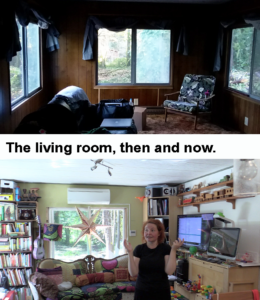St. Vinnie’s RHRP Program Helped Make A Homestead A Home
On a warm afternoon, the Scandinavian minimalist, black tiny house of Anna Bjornsdotter, husband Jose, and son Viggo hardly looks like the stuff of blood, sweat, and tears, but the family’s long journey from southern California to Oregon’s McKenzie River has been a story of finding community and support in the midst of hardship.
“I had some romantic notions about homesteading. It turns out that I am a modern person…”– Anna Bjornsdotter
Most importantly, the story caught the attention of Anne Williams. Until her death in February 2020, Anne supervised St. Vincent de Paul’s Housing Programs, including the Regional Housing Rehabilitation Program (RHRP) that makes low-interest/no payment loans to homeowners for repairs critical to health and safety. Anne not only supported Anna’s RHRP application, but she also lobbied the Loan Committee for additional funds to cover the huge scope of work.
Earlier in the decade, Anna and Jose had been living comfortably in their California home and utilizing their considerable talents, Jose as a painter and Anna, a clothing designer. Then, six years ago, following Viggo’s birth, circumstances flipped. His fragile health prompted his parents to leave their jobs and devote themselves to finding answers and a new, highly therapeutic normal. In the process, they lost almost everything, but with friends’ help managed to hang onto and sell the house, generating $70,000 to rebuild their lives as a family with the goal to have no mortgage payments. They narrowed their options to a tree-studded parcel above Leaburg and moved into a dilapidated travel trailer at the darkest, wettest, muddiest time of year. It was better than tent camping, but not by much.
 “Miserable,” is how Anna remembers it; mud, mud, mud everywhere. They had a well, a septic tank, and the leach-field; there was no power yet, but they had a generator. A friend of a friend offered to sell them an abandoned mobile home for $1,000. For another $5,000 they got it onto their own property, dry rot, mice, snakes and all.
“Miserable,” is how Anna remembers it; mud, mud, mud everywhere. They had a well, a septic tank, and the leach-field; there was no power yet, but they had a generator. A friend of a friend offered to sell them an abandoned mobile home for $1,000. For another $5,000 they got it onto their own property, dry rot, mice, snakes and all.
“We had remodeled our home in California ourselves, and Jose used to be an electrician,” Anna explained. “So we had some experience.”
But developing a lot was a very different story.
“I had some romantic ideas about homesteading,” Anna admitted. “But it turns out that I am a modern person who wants running hot water and lights at the flip of a switch.”
Looking for a solution, Anna turned to Catholic Community Services, which in turn recommended Homes for Good and St. Vincent de Paul. Anna described their story in the letter that reached Anne Williams’ desk and ultimately earned the long-term, no-payment RHRP loan, and the expertise and moral support of the RHRP staff. This proved pivotal as Anna and Jose planned, engineered, and contracted each phase, but did most of the labor themselves.

“I feel incredibly grateful to the RHRP staff at St. Vincent de Paul for trusting us to do the work ourselves,” Anna said. “We could never have gotten everything done for the amount allotted if we had used contractors.”
Over a 15-plus month period, contrary to many learned predictions, Anna, Jose, and Viggo pulled off the rehab with nary a failed inspection and a lot of selective shopping.
“We tried to use as many recycled items as possible, partly to make the money last longer,” Anna said. “Used items have a quality uniquely their own, not replicable in mass production.”
Misery has given way to satisfaction with this homegrown labor of love. What hasn’t diminished is the gratitude for people who recognized a family’s plight and stepped in to help.

